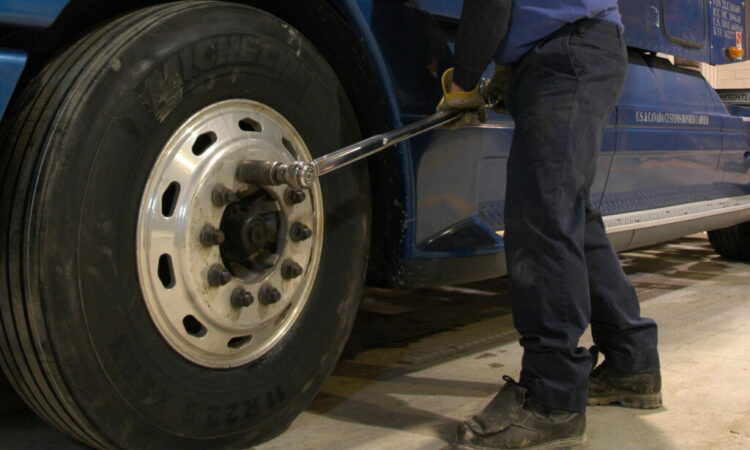All wheel separations are preventable, but the industry’s focus on speed over thoroughness means they remain a potentially deadly problem.
Dave McDonald, commercial sales manager with Bridgestone Commercial Solutions, gave the Ontario Fleet Safety Council an update on the ongoing problem during a March 30 webinar.
“No matter how hard we try, how much training we do in the province of Ontario, we still have wheels coming off,” he said, noting there are about 150 such incidents a year in the province. “Wheel-offs are absolutely preventable. There’s no reason I can imagine that a wheel should come off a vehicle.”
Part of the problem, he believes, is that fleets and service providers put mechanics and wheel installers under too much pressure to get the job done quick.
“It takes 45 minutes to fix a flat,” he said. “If it takes 45 minutes to do that job and you do it in 30, it doesn’t mean you’re a better tire service person, it means you’re missing a bunch of stuff.”
Expediting a tire repair means the mechanic is cutting corners on things like cleaning, inspecting, and lubricating parts, he added. “Our industry creates a desire for speed. I get it. You make money when the truck is running, not parked at the side of the road. So, there’s a certain amount of pressure in the industry on people doing tire repairs. It creates a lot of pressure to take shortcuts.”
7 myths around wheel installations
He addressed seven myths about wheel installations that can result to separations.
Torque keeps the wheel on the vehicle: “Not true,” McDonald said, adding it’s the clamping force that keeps the wheel attached. Torque is simply a method installers use to generate the appropriate clamping force.
The tighter the wheel nut, the better: Wheel installers will often apply the maximum recommended torque, but that’s not always the best approach, McDonald warned. If the spec’ is 450-500 lb.-ft., he recommends opting for the middle of the range. That way if the torque wrench is off by 5%, it won’t overtorque the wheel if the maximum 500 lb.-ft. was applied. “We recommend the middle of the torque range, but a lot of fleets use 500 lb.-ft. for hub-piloted wheel systems,” he said.
Wheel studs will break before they stretch: “They stretch like crazy,” McDonald countered, adding installers should always inspect studs for stretch, even if just by visually comparing them to other studs and ensuring they match thread for thread. Damaged or stretched studs need to be replaced.
Anti-seize can be used as a lube: McDonald said there are a lot of good applications for anti-seize – wheels aren’t one of them. He said anti-seize is gritty, like mud, and “You would never think to put mud on the stud to use it as lubricant.”
Air impact is sufficient to torque the nut: You always need to finish at least the final 20% of torquing with a manual torque wrench, McDonald said, as it’s the only way to ensure an appropriate clamping force.
Torque wrench calibrations are only required annually: That may be true if the torque wrench is used infrequently, McDonald said, but in high-use applications calibrations may be required every three to six months.
Retorques are unnecessary: While they may not be required by law, McDonald said they serve as a needed audit of the original installation.
In addition to correcting wheel installation myths, McDonald also addressed the problems that most frequently lead to wheel separations. These include: dry installation of hub-piloted wheels; improper stud installation; excess or uncured paint more than 0.003” thick (about the thickness of a glossy magazine page); and vertical tire mounting, which can lead to improperly mounted tires.
Do’s and Don’ts to prevent wheel-offs
He left attendees with these dos and don’ts to prevent wheel-offs:
Do: Use appropriate lubricant;
Do: Finish installations with a calibrated torque wrench;
Do: Clean and inspect all parts;
Do: Replace parts that are not in top shape with North American-produced, quality parts;
Do: Check stud condition for damage or stretch-related wear;
Do: Use proper lubricant when mounting tires;
Do: Use “winter air” or consult tire manufacturer charts to use the recommend air temperatures;
Do: Use all recommended safety equipment;
Do: Familiarize yourself with telltale signs of imminent problems – such as cracks or rust streaks – which are classic signs of wheel movement;
Don’t: Add air to tires that are underinflated by 20% or more without identifying the cause;
Don’t: Vertically mount tires. Seat tires while they’re laid flat.


